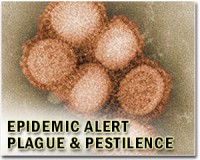| . |  |
. |
Atlanta GA (SPX) Jul 19, 2010 Approximately 1 out of every 4 people observed in a public setting failed to cover their mouth when they coughed or sneezed according to research presented recently at the International Conference on Emerging Infectious Diseases. Even more concerning, less than 5 percent of people covered their mouth using methods recommended by public health officials. "We were surprised to find that this was the first study of directly observed respiratory hygiene behaviour that we could identify," says Nick Wilson of Otago University Wellington in New Zealand, an author on the study. In the midst of the H1N1 influenza pandemic that started in 2009, public health officials around the world were urging individuals to take action to avoid spreading the infection. One of the simplest actions recommended was that individuals cover their mouth when they cough or sneeze, preferrably with a tissue or into their elbow, to avoid getting the virus on their hands and spreading it to nearby surfaces. To determine if people were heeding the advice of public health agencies, Wilson and his colleagues conducted an observational survey in 3 public areas in New Zealand's capital city of Wellington: A train station, a hospital and a shopping mall. Local public health authorities had already been conducting an educational campaign with posters and radio and newspaper advertisements recommending people cover their mouth when they cough or sneeze, using a tissue or their elbow. Using medical students as observers they recorded the incidence of coughs and sneezes and the individual response to the respiratory event. Wilson and his colleagues observered 5.5 coughs and sneezes per observed-person-hour of which 26.7% went uncovered and only 4.7% were covered by a tissue, handkerchief or elbow (the method recommended by public health officials). The most common behavior, observed in 64.4% of cases, was to cover the mouth with the hands. Use of a handkerchief or covering the mouth with the elbow were the least common behaviors. "This study showed a low prevalence of recommended respiratory hygiene behaviors suggesting that hygiene messages promoted in mass media campaigns have not been seen and/or have not been readily adopted by the public in this city," says Wilson. Subsequent work they have done indicates that there has actually been a drop off in some hygiene behaviours since the pandemic in the New Zealand winter of 2009. This is based on regular monitoring of public use of a hand sanitiser station at the entrance to the hospital near where they work.
Share This Article With Planet Earth
Related Links American Society for Microbiology Epidemics on Earth - Bird Flu, HIV/AIDS, Ebola
 Global economic crisis threatens fight against AIDS
Global economic crisis threatens fight against AIDSWashington (AFP) July 17, 2010 The global fight against HIV/AIDS is threatened by stagnating economies around the world, which have caused governments to shrink their budgets and, with them, grants to fight the illness. "We are facing a major challenge in terms of funding because the global economic downturn has got a lot of governments looking hard at their budgets, and some doing decreases in the kind of aid that goes f ... read more |
|
| The content herein, unless otherwise known to be public domain, are Copyright 1995-2010 - SpaceDaily. AFP and UPI Wire Stories are copyright Agence France-Presse and United Press International. ESA Portal Reports are copyright European Space Agency. All NASA sourced material is public domain. Additional copyrights may apply in whole or part to other bona fide parties. Advertising does not imply endorsement,agreement or approval of any opinions, statements or information provided by SpaceDaily on any Web page published or hosted by SpaceDaily. Privacy Statement |